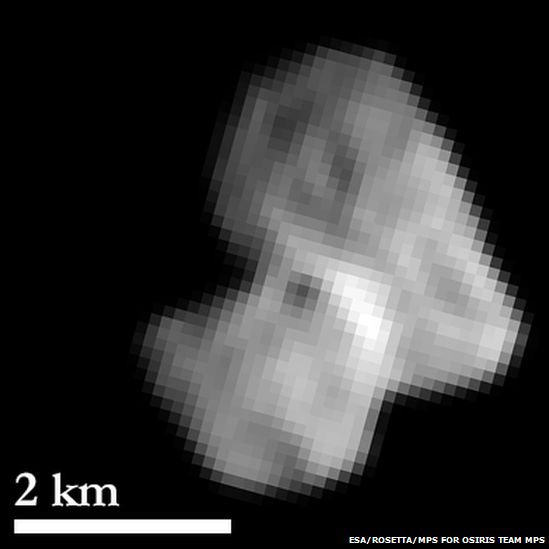Rosetta's comet seen in close-up
- Published

Europe's Rosetta probe has acquired new images of the comet it is chasing through space.
Surface details of 67P/Churyumov-Gerasimenko are becoming visible, as the craft nears its quarry.
The images confirm it may be not one but two objects joined together; a smaller "head" connected to a larger "body".
Rosetta will arrive at the comet in August.
The latest images suggest the "neck" of the comet is of particular interest to scientists.
"The only thing we know for sure at this point is that this neck region appears brighter compared to the head and the body of the nucleus," said Dr Holger Sierks from the Max-Planck-Institute in Germany.
Members of the scientific imaging team say this could be due to a different surface composition or topography in this region.
The images were taken on July 20 when the probe was about 5,500km from the comet.
Historic touchdown
Rosetta is expected to move into orbit on 6 August.
By that stage, the European Space Agency probe should be no more than 70km from the surface of the 4.5km-wide ball of ice.
Once scientists understand better the gravitational field of 67P, the orbit will be lowered to about 30km.
Then mapping can begin to select a touchdown zone for Philae - the small landing robot on Rosetta - in November.
Rosetta will be the first space mission to rendezvous with a comet, follow it as it orbits the Sun, and attempt to send a lander to its surface.